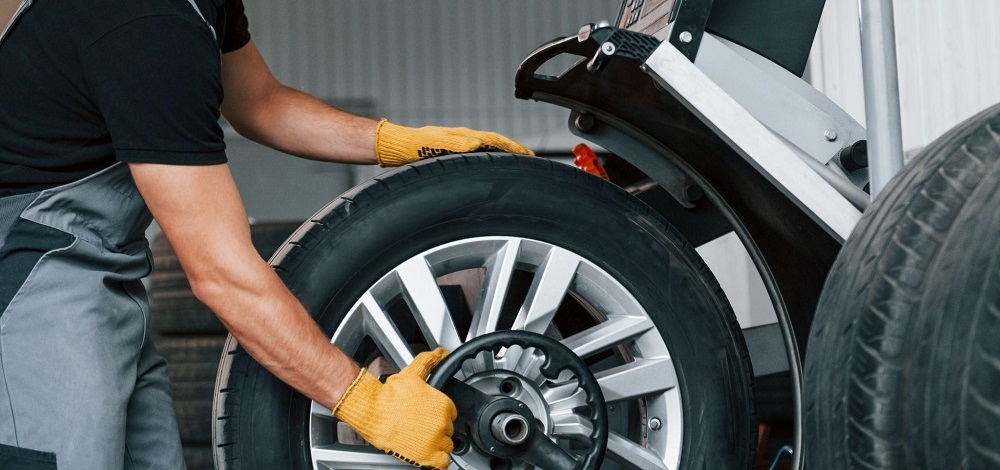Morris Tires: Where GMC Tire Service Fulfills Quality
Morris Tires: Where GMC Tire Service Fulfills Quality
Blog Article
Tire Solution: The Impact of Weather
When it comes to ensuring ideal efficiency and safety on the roadway, understanding the impact of weather condition problems on tire service is critical. GMC Tire Service. In this conversation, we will check out the complex partnership between weather condition problems and tire solution, losing light on the relevance of weather-specific tire upkeep methods and considerations.
Warmth and Tire Performance
When exposed to high temperatures, tires experience modifications in efficiency that can substantially influence lorry safety and handling. The warmth generated from extended driving or warm weather condition problems creates the tire rubber to soften, causing lowered step life and boosted wear. As the rubber becomes softer, the tire's grasp when traveling reduces, impacting stopping ranges and general grip. In extreme cases, excessive heat can also create tire blowouts, posing an extreme safety threat to the lorry and its residents.

Cold Weather Condition Impacts
Cold weather conditions can have a considerable impact on tire efficiency and safety and security. In chilly weather, tires might additionally shed air pressure much more rapidly, which can affect taking care of and gas efficiency.
To mitigate the impacts of winter on tires, it is critical to regularly inspect tire pressure and inflate them to the manufacturer's recommended degrees. Making use of winter months or all-season tires designed for chilly climate conditions can likewise boost grip and grip on icy or snowy roads. Correct tire upkeep, consisting of normal examinations for wear and damage, comes to be a lot more critical during colder months to ensure ideal performance and security.
Rainy Conditions Impact
Tires with worn-out footsteps are much more vulnerable to hydroplaning, where a layer of water constructs up in between the tire and the road surface area, leading to loss of grip. To fight this, chauffeurs must regularly evaluate their tires for appropriate step deepness and think about investing in tires especially designed for wet problems.
In addition, wet weather can additionally decrease presence, making it testing for motorists to see the roadway ahead plainly (GMC Tire Service). In such conditions, it is vital to change driving rates appropriately and keep a safe complying with distance to permit for sudden quits. Correctly filled with air tires can additionally assist in preserving control on damp roads by providing much better handling and grasp
Snow and Tire Safety
Snow-covered roadways position distinct obstacles for chauffeurs, emphasizing the value of appropriate tire choice and maintenance. When driving in snowy conditions, having the ideal tires can make a significant distinction in safety and security and performance. Winter months tires are developed with unique rubber compounds and step patterns to offer better traction on snow and ice compared to all-season tires. The deeper footsteps and sipes of wintertime tires aid grip the road better, minimizing the risk of sliding and slipping.

Moreover, motorists must consider installing tire chains in extreme snowy conditions. Tire chains offer extra traction by clutching the snow and ice, boosting stability and control. However, it is very important to follow producer directions when using and installing tire chains to prevent damage to the tires and car. By choosing the right tires, keeping correct rising cost of living, and taking into consideration extra traction help like tire chains, motorists can boost their safety when navigating snow-covered roads.
Weather-Related Tire Upkeep
When confronted with different weather condition conditions, proper tire maintenance comes to be a vital aspect of lorry safety and security and efficiency. click this site Weather-related tire upkeep incorporates an array of practices intended at ensuring ideal tire function and long life in various weather circumstances. One vital aspect of weather-related tire maintenance is tire pressure regulation. Rising and fall temperatures can cause tire stress to vary, impacting grip and gas effectiveness. Consistently changing and inspecting tire pressure according to supplier suggestions is vital for risk-free driving in changing weather conditions. In addition, tire tread depth plays a significant role in dealing with various climate components. Tires with ample tread deepness give far better hold on wet or icy roadways, lowering the danger of skidding or hydroplaning. When tread wear reaches a particular deepness is crucial for keeping grip and security in damaging weather, evaluating tire tread regularly and changing tires. By focusing on weather-related tire upkeep, drivers can boost safety and security, improve vehicle performance, and extend the life-span of their tires.
Verdict
To conclude, climate condition have a substantial influence on tire performance and here are the findings safety and security. From warm influencing tire stress and use to winter reducing traction, it is necessary to consider the weather when maintaining and making use of tires. Stormy problems can lower hold and bring about hydroplaning, while snow can increase the threat of accidents if tires are not effectively equipped. Weather-related tire maintenance is essential in guaranteeing optimal performance and safety and security on the roadways.
In this discussion, we will explore the complex partnership between climate problems and tire solution, shedding light on the relevance of weather-specific tire maintenance practices and factors to consider.

Report this page